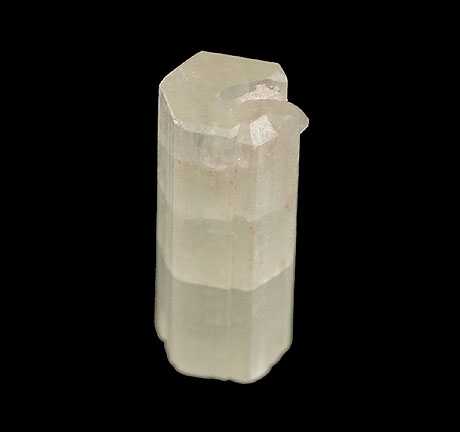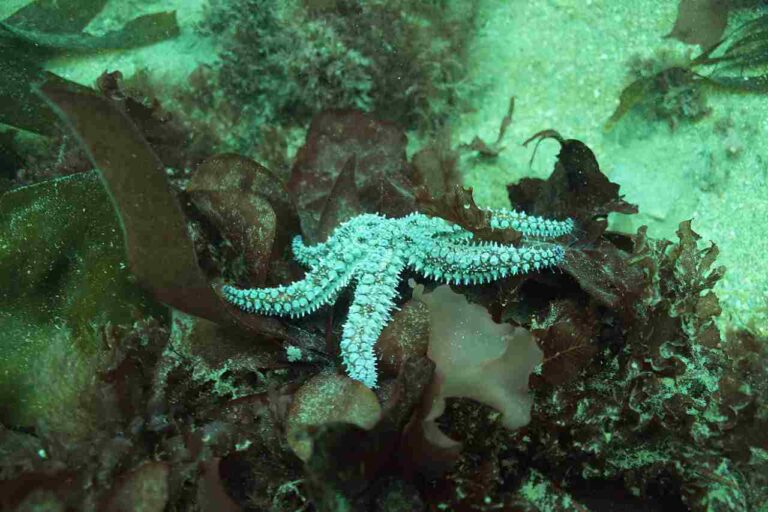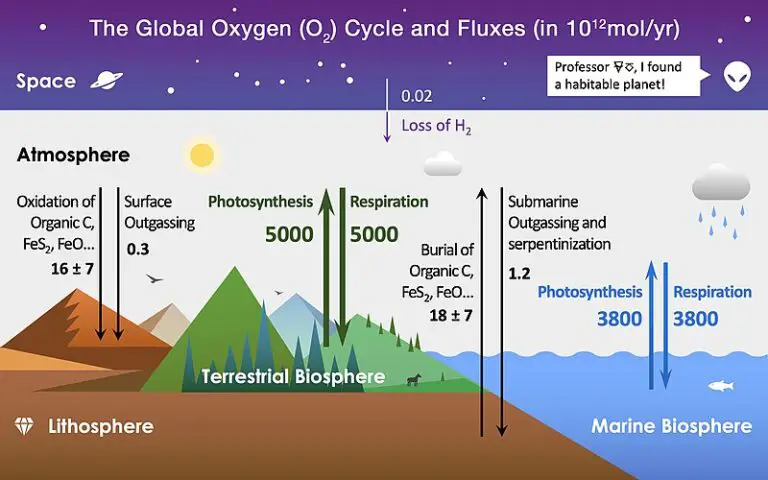5 Examples of Pyroelectric Materials Explained
Examples of pyroelectric materials are; lead zirconate titanate, tourmaline, collagen, polyvinyl fluoride, and hydroxyapatite.
These materials can be differentiated into pyroelectric crystals, polymers, ceramics, and bio-based materials.
This article discusses the examples of pyroelectric materials, as follows;
1). Lead Zirconate Titanate (as one of the Examples of Pyroelectric Materials)
Lead zirconate titanate (PZT) is a pyroelectric, ceramic material with chemical formula; PbTiO3, whose properties have been evaluated in numerous studies.
The pyroelectric coefficient of PZT is approximately 10-4 C/(m2°C) [4].
Lead zirconate titanate is also piezoelectric, because of its capability to generate electric charge-flow when subjected to mechanical stress, through spontaneous polarization in the absence of an external electric field.
Because of its strong peizoelectric properties, lead zirconate titanate is used in ultrasound transducers, where it helps to convert electronic signals to acoustic pulses.
The pyroelectric properties of lead zirconate titanate are not very strong compared to other pyroelectric materials like triglycine sulfate (TGS) [11].
To optimize its pyroelectric capability, PZT can be physicochemically modified. This makes it suitable for use in pyroelectric sensors and other devices [15].
2). Tourmaline
Tourmaline is a pyroelectric crystalline mineral, which has unique piezoelectric, radioactive and optical properties [5].
While its thermal energy-induced electric potential can be generated under a broad range of temperatures, the pyroelectric current output of tourmaline is relatively low, and its pyroelectric coefficient is approximately 1-20 μCm -2 K -1 [17].
Tourmaline is also piezoelectric, because it is non-centrosymmetric and can generate electric potential in the absence of an electric field [10].
3). Collagen (as one of the Examples of Pyroelectric Materials)
Collagen is a biological, proteinous molecule that is found in cartilage, bone, teeth, blood vessels and tendons.
The material's core function is to provide mechanical and structural support wherever it occurs.
Collagen is a classic example of a bio-based pyroelectric material, whose pyroelectric effect occurs in multiple axial directions [2].
In addition to its pyroelectric properties, collagen is also piezoelectric, and this can be attributed to its distinctive molecular structure that bears slight similarity to that of crystals like tourmaline [7].
As earlier stated, collagen is piezoelectric in nature, and its piezoelectric coefficient falls between 0.2 and 2.0 pC/N [6].
The pyroelectric and piezoelectric properties of collagen are required for biological functions such as inflammatory response and stimuli-sensitivity [13].

4). Polyvinylidene Fluoride
Polyvinylidene fluoride (PVDF) is a pyroelectric semi-crystalline polymeric compound with piezoelectric and ferroelectric properties [3].
The pyroelectric coefficient of PVDF is about −0.27 × 10−4 C m−2 K−1, which is low compared to that of other pyroelectric materials.
Its properties can be enhanced through chemical modification, whereby other elements are incorporated into the chemical structure of the compound [1]. Fabricating thin-films of PVDF with large surface area, can also improve its performance.
PVDF is piezoelectric, thermally stable and mechanically resilient, which enables it to be useful for various applications in energy-harvesting, sensing and biomedicine [14].
Although PVDF is electrically conductive, its ability to conduct electric currents varies significantly with temperature. This gives it a rather broad range of conductivity-based performance [12].
Piezoelectricity in PVDF is often measured alongside its pyroelectricity.
5). Hydroxyapatite (as one of the Examples of Pyroelectric Materials)
Hydroxyapatite (HAP) is another bio-based pyroelectric material that occurs naturally in bone, and can be produced artificially for various biomedical purposes.
Like all pyroelectric materials, hydroxyapatite is also piezoelectric, and can be integrated into thin-film silicon as a component of solar panels [8].
The pyroelectric coefficient of hydroxyapatite falls between 0.1 - 40 nC cm−2 K−1 on average [16].
Biomedical uses of HAP include prosthetic coating and bone grafting [9].

Conclusion
Examples of pyroelectric materials are;
1. Lead Zirconate Titanate
2. Tourmaline
3. Collagen
4. Polyvinylidene Fluoride
5. Hydroxyapatatite
References
1). Abdullah, K.; Batal, M. A.; Hamdan, R.; Khalil, T.; Zaraket, J.; Aillerie, M.; Salame, C. (2017). "The Enhancement of PVDF Pyroelectricity (Pyroelectric Coefficient and Dipole Moment) by Inclusions." Energy Procedia 119:545-555. Available at: https://doi.org/10.1016/j.egypro.2017.07.074. (Accessed 1 March 2023).
2). Athenstaedt, H. (1971). "Pyroelectric and piezoelectric behaviour of human dental hard tissues." Arch Oral Biol. 1971 May;16(5):495-501. Available at: https://doi.org/10.1016/0003-9969(71)90194-4. (Accessed 1 March 2023).
3). Chen, G. W.; Majid, W. H. A. (2006). "Pyroelectric Properties of Polyvinylidene Fluoride (PVDF) by Quasi Static Method." 2006 IEEE International Conference on Semiconductor Electronics, Kuala Lumpur, Malaysia, 2006, pp. 468-471. Available at: https://doi.org/10.1109/SMELEC.2006.381105. (Accessed 1 March 2023).
4). Dalola, S.; Ferrari, V.; Marioli, D. (2010). "Pyroelectric Effect in PZT Thick Films for Thermal Energy Harvesting in Low-Power Sensors." Procedia Engineering 5:685-688. Available at: https://doi.org/10.1016/j.proeng.2010.09.202. (Accessed 1 March 2023).
5). Hawkins, K. D.; Mackinnon, I.; Schneeberger, H. (1995). "Influence of chemistry on the pyroelectric effect in tourmaline." American Mineralogist 80(5). Available at: https://doi.org/10.2138/am-1995-5-610. (Accessed 1 March 2023).
6). Jacob, J.; More, N.; Kalia, K.; Kapusetti, G. (2018). "Piezoelectric smart biomaterials for bone and cartilage tissue engineering." Inflamm Regen. 2018 Feb 27;38:2. Available at: https://doi.org/10.1186/s41232-018-0059-8. (Accessed 1 March 2023).
7). Lang, S. (1966). "Pyroelectric Effect in Bone and Tendon." Nature 212, 704–705 (1966). Available at: https://doi.org/10.1038/212704a0. (Accessed 1 March 2023).
8). Lang, S.; Tofail, S. A. M.; Gandhi, A. A.; Gregor, M.; Wolf-Brandstetter, C.; Kost, J.; Bauer, S.; Krause, M. (2011). "Pyroelectric, Piezoelectric, and Photoeffects in Hydroxyapatite Thin Films on Silicon." Applied Physics Letters 98(12):123703-123703-3. Available at: https://doi.org/10.1063/1.3571294. (Accessed 1 March 2023).
9). Lang, S. B.; Tofail, S. A.; Kholkin, A. L.; Wojtaś, M.; Gregor, M.; Gandhi, A. A.; Wang, Y.; Bauer, S.; Krause, M.; Plecenik, A. (2013). "Ferroelectric polarization in nanocrystalline hydroxyapatite thin films on silicon." Sci Rep. 2013;3:2215. Available at: https://doi.org/10.1038/srep02215. (Accessed 1 March 2023).
10). Lu, Q.; Li, B.; Bai, F. (2016). "Electrical Effect and Influence Factors of Tourmaline." In: , et al. Characterization of Minerals, Metals, and Materials 2016. Springer, Cham. Available at: https://doi.org/10.1007/978-3-319-48210-1_10. (Accessed 1 March 2023).
11). Mahler, R. J.; Phelan Jr., R. J.; Cook, A. R. (1972). "High D∗, fast, lead zirconate titanate pyroelectric detectors." Infrared Physics Volume 12, Issue 1, March 1972, Pages 57-59. Available at: https://www.sciencedirect.com/science/article/abs/pii/0020089172900371. (Accessed 1 March 2023).
12). Puértolas, J. A.; Garcia-Garcia, J. F.; Pascual, F. J.; González-Domínguez, J. M.; Martinez, M. T.; Ansón-Casaos, A. (2017). "Dielectric behavior and electrical conductivity of PVDF filled with functionalized single-walled carbon nanotubes." Composites Science and Technology 152. Available at: https://doi.org/10.1016/j.compscitech.2017.09.016. (Accessed 1 March 2023).
13). Ravi, H. K.; Simona, F.; Hulliger, J.; Cascella, M. (2012). "Molecular origin of piezo- and pyroelectric properties in collagen investigated by molecular dynamics simulations." J Phys Chem B. 2012 Feb 16;116(6):1901-7. Available at: https://doi.org/10.1021/jp208436j. (Accessed 1 March 2023).
14). Szewczyk, P. K.; Gradys, A.; Kim, S. K.; Persano, L.; Marzec, M.; Kryshtal, A.; Busolo, T.; Toncelli, A.; Pisignano, D.; Bernasik, A.; Kar-Narayan, S.; Sajkiewicz, P.; Stachewicz, U. (2020). "Enhanced Piezoelectricity of Electrospun Polyvinylidene Fluoride Fibers for Energy Harvesting." ACS Appl Mater Interfaces. 2020 Mar 18;12(11):13575-13583. Available at: https://doi.org/10.1021/acsami.0c02578. (Accessed 1 March 2023).
15). Thakur, Op.; Singh, J. P.; Prakash, C.; Kishan, P. (2007). "Modified Lead-zirconate-titanate for Pyroelectric Sensors." Defence Science Journal 57(3). Available at: https://doi.org/10.14429/dsj.57.1764. (Accessed 1 March 2023).
16). Tofail, S. A. M.; Baldisserri, C.; Haverty, D.; Mcmonagle, D.; Erhart, J. (2009). "Pyroelectric Surface Charge in Hydroxyapatite Ceramics." Journal of Applied Physics 106(10):106104 - 106104-3. Available at: https://doi.org/10.1063/1.3262628. (Accessed 1 March 2023).
17). Zhou, G.; Liu, H.; Kairen, C.; Gai, X.; Zhao, C.; Liao, L.; Shen, K.; Fan, Z.; Shan, Y. (2018). "The origin of pyroelectricity in tourmaline at varying temperature." Journal of Alloys and Compounds 744. Available at: https://doi.org/10.1016/j.jallcom.2018.02.064. (Accessed 1 March 2023).





